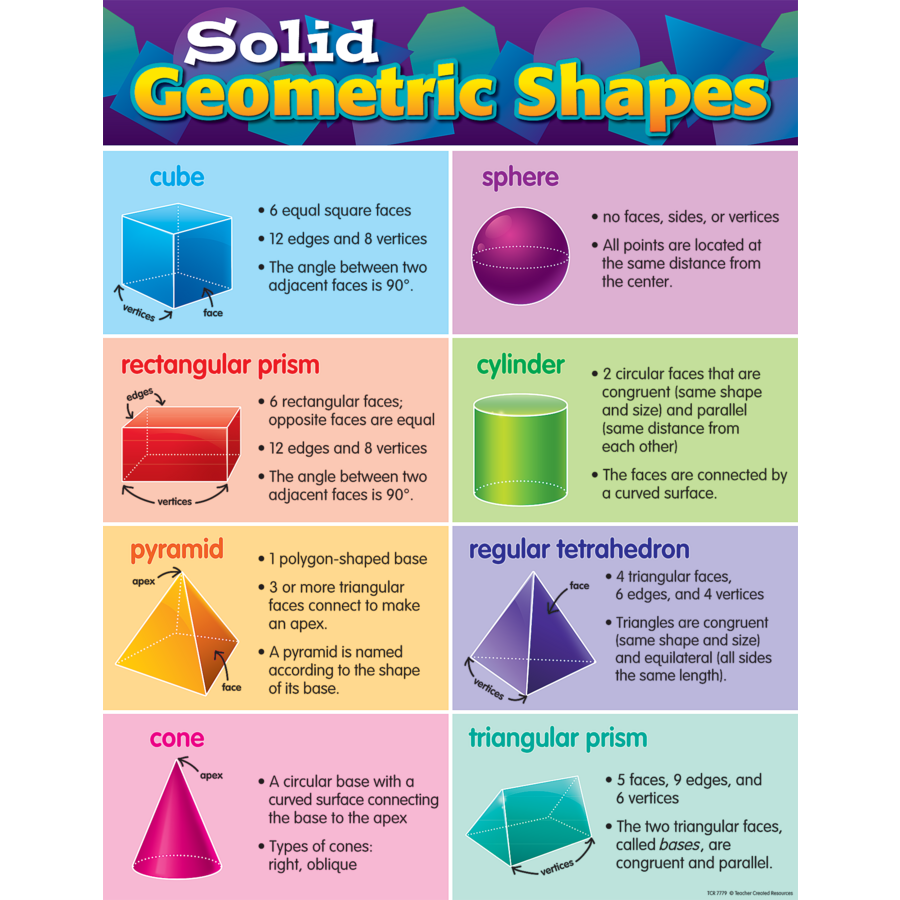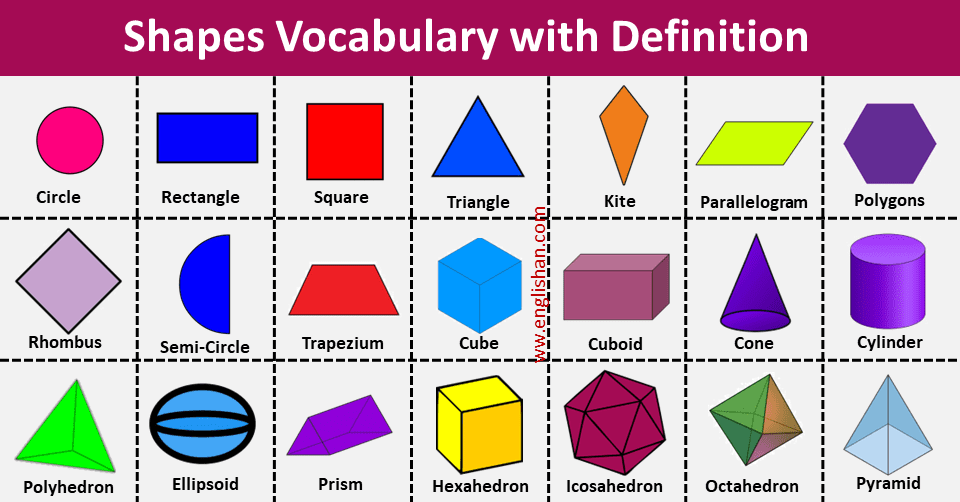This Pentagon Has 5 Edges For a polygon an edge is a line segment on the boundary joining one vertex (corner point) to another. This Tetrahedron Has 6 Edges For a polyhedron an edge is a line segment where two faces meet. Faces A face is any of the individual flat surfaces of a solid object.
515 정사면체 Images, Stock Photos, 3D objects, & Vectors | Shutterstock
1 day agoFrom the summary above, a regular tetrahedron has 4 vertices, 6 edges, and 4 faces. In fact, it is called a “tetrahedron” because it has 4 faces. \ ( _ \square \) What is the sum of the number of faces of all types of convex regular polyhedra?

Source Image: 7esl.com
Download Image
Oct 20, 2023A Guide For Teachers October 20, 2023 | 3 min read Neil Almond Vertices, faces and edges come up a lot in geometry when children are learning about the properties of 3d shapes. Here we explain what each of these mean and how to work out the number of vertices, faces and edges for any shape.

Source Image: pinterest.com
Download Image
Name Shape Edges Faces Vertices 2D shape – Primary Resources – Magazine with 4 pages: Name Shape Edges Faces Vertices 2D sha… | Primary resources, 2d shapes, Vertex The properties of 3D shapes are faces, edges and vertices. Faces are the flat or curved surfaces that make up the outside of a 3D shape. Edges are the lines where two faces on a 3D shape meet. Vertices are the corners of a 3D shape formed where two or more edges meet. For example, a cube has 6 faces, 12 edges and 8 vertices. The poster below

Source Image: slideplayer.com
Download Image
What Shape Has 4 Vertices 6 Edges And 4 Faces
The properties of 3D shapes are faces, edges and vertices. Faces are the flat or curved surfaces that make up the outside of a 3D shape. Edges are the lines where two faces on a 3D shape meet. Vertices are the corners of a 3D shape formed where two or more edges meet. For example, a cube has 6 faces, 12 edges and 8 vertices. The poster below A cube has 6 Faces, 8 Vertices, and 12 Edges, so: 6 + 8 − 12 = 2. Example With Platonic Solids. Let’s try with the 5 Platonic Solids: Name Faces Vertices Edges F+V-E; Tetrahedron: 4: 4: 6: 2: Cube: 6: 8: 12: 2: Octahedron: 8: 6: … It may be easier to see when we “flatten out” the shapes into what is called a graph (a diagram of connected
I have 4 faces. I have 6 edges. I have 4 vertices. – ppt download
A tetrahedron is a polyhedron with 4 faces, 6 edges, and 4 vertices, in which all the faces are triangles. Observe the tetrahedron given below to see its faces, vertices, and edges. The following are the properties of a tetrahedron which help us identify the shape easily. It has 4 faces, 6 edges, and 4 vertices (corners). Solid Geometric Shapes Chart – TCR7779 | Teacher Created Resources

Source Image: teachercreated.com
Download Image
Solids 3D shapes. – ppt download A tetrahedron is a polyhedron with 4 faces, 6 edges, and 4 vertices, in which all the faces are triangles. Observe the tetrahedron given below to see its faces, vertices, and edges. The following are the properties of a tetrahedron which help us identify the shape easily. It has 4 faces, 6 edges, and 4 vertices (corners).

Source Image: slideplayer.com
Download Image
515 정사면체 Images, Stock Photos, 3D objects, & Vectors | Shutterstock This Pentagon Has 5 Edges For a polygon an edge is a line segment on the boundary joining one vertex (corner point) to another. This Tetrahedron Has 6 Edges For a polyhedron an edge is a line segment where two faces meet. Faces A face is any of the individual flat surfaces of a solid object.

Source Image: shutterstock.com
Download Image
Name Shape Edges Faces Vertices 2D shape – Primary Resources – Magazine with 4 pages: Name Shape Edges Faces Vertices 2D sha… | Primary resources, 2d shapes, Vertex Oct 20, 2023A Guide For Teachers October 20, 2023 | 3 min read Neil Almond Vertices, faces and edges come up a lot in geometry when children are learning about the properties of 3d shapes. Here we explain what each of these mean and how to work out the number of vertices, faces and edges for any shape.

Source Image: in.pinterest.com
Download Image
The Tetrahedron has 4 vertices and 4 faces, and is dual to itself. | Download Scientific Diagram Frequently Asked Questions What Are Vertices, Faces, Edges? Every geometric shape is composed of different parts such as vertices, faces, edges. We come across different objects with rectangular faces, circular faces, cubic faces, diamond faces, triangular faces, etc. We also know many objects that have sharp corners and edges.

Source Image: researchgate.net
Download Image
Shapes Names with Pictures – 2D and 3D Shapes Names • Englishan The properties of 3D shapes are faces, edges and vertices. Faces are the flat or curved surfaces that make up the outside of a 3D shape. Edges are the lines where two faces on a 3D shape meet. Vertices are the corners of a 3D shape formed where two or more edges meet. For example, a cube has 6 faces, 12 edges and 8 vertices. The poster below

Source Image: englishan.com
Download Image
2D and 3D Shapes for Kids | Geometry for Kids | Twinkl USA – YouTube A cube has 6 Faces, 8 Vertices, and 12 Edges, so: 6 + 8 − 12 = 2. Example With Platonic Solids. Let’s try with the 5 Platonic Solids: Name Faces Vertices Edges F+V-E; Tetrahedron: 4: 4: 6: 2: Cube: 6: 8: 12: 2: Octahedron: 8: 6: … It may be easier to see when we “flatten out” the shapes into what is called a graph (a diagram of connected

Source Image: m.youtube.com
Download Image
Solids 3D shapes. – ppt download
2D and 3D Shapes for Kids | Geometry for Kids | Twinkl USA – YouTube 1 day agoFrom the summary above, a regular tetrahedron has 4 vertices, 6 edges, and 4 faces. In fact, it is called a “tetrahedron” because it has 4 faces. \ ( _ \square \) What is the sum of the number of faces of all types of convex regular polyhedra?
Name Shape Edges Faces Vertices 2D shape – Primary Resources – Magazine with 4 pages: Name Shape Edges Faces Vertices 2D sha… | Primary resources, 2d shapes, Vertex Shapes Names with Pictures – 2D and 3D Shapes Names • Englishan Frequently Asked Questions What Are Vertices, Faces, Edges? Every geometric shape is composed of different parts such as vertices, faces, edges. We come across different objects with rectangular faces, circular faces, cubic faces, diamond faces, triangular faces, etc. We also know many objects that have sharp corners and edges.